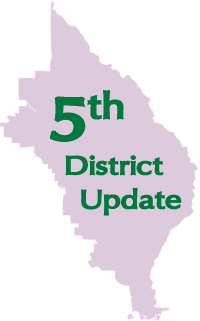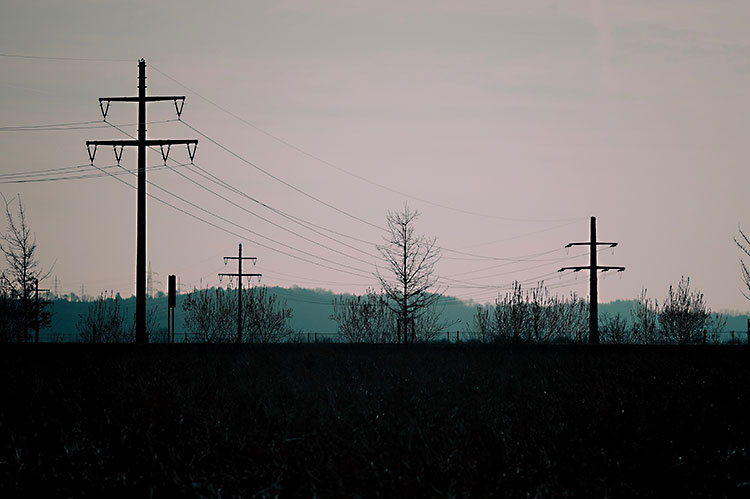![]() By Bruce McPherson, County Supervisor, 5th District
By Bruce McPherson, County Supervisor, 5th District
With large portions of Santa Cruz County designated as high-risk for wildfire, the County’s first responders are committed to providing robust wildfire prevention and response. Doing so requires a great deal of resources and coordination among local and state fire authorities, as well as law enforcement agencies and emergency services leaders.
But we are also dealing with a harsh new reality outside of our control that is complicating those efforts, even if it is designed to prevent fires on the order of what Sonoma County has experienced recently and Butte County suffered in the 2018 Camp Fire.
Two PG&E’s Public Safety Power Shutoff events in early and late October affected an estimated 37,000 and 45,000 customers, respectively, in Santa Cruz County. The Fifth District was hit particularly hard as the San Lorenzo Valley and much of Scotts Valley were without power for several days, causing hardship for residents, businesses and schools, and making cellular communication difficult. Additional shutoffs may occur soon as dry, windy conditions persist.
The shutoff events are designed to minimize the chance that PG&E transmission lines and wires might spark a wildfire if damaged by high winds. While I appreciate efforts to prevent a potentially deadly blaze in our densely forested areas, I am concerned about the ongoing toll these shutoffs are taking on medically vulnerable residents, families with school-age children, and low-income folks who have difficulty replacing spoiled food or keeping warm at night.
 I was glad PG&E set up three community resources centers during the late October outage, compared to just one in early October, and that the company’s website remained operable for outage updates when it had failed weeks earlier.
I was glad PG&E set up three community resources centers during the late October outage, compared to just one in early October, and that the company’s website remained operable for outage updates when it had failed weeks earlier.
However, the County is working to document the negative impacts of these shutoff events to share with PG&E’s regulator, the California Public Utilities Commission, in an effort to spur improvements in how the company conducts future power outages. Our Information Technology Department also has worked with telecommunications providers to locate cellular boosters that will keep their services intact.
Meanwhile, the County is taking other steps to boost our fire protection. On October 22, the Board of Supervisors approved placing a measure on the ballot to create additional funding for County Fire, which is needed to staff Cal Fire stations during periods when the state does not fund coverage.
Beginning in January 2020, ballots will be sent to all property owners in County Service Area 48, which was established in 1998 by property owners in rural unincorporated areas to address the shortfall in funding resulting from Prop. 13.
Votes within CSA 48 are cast on a weighted basis proportional to the benefit received. The amount of the assessment the owner would pay is also calculated in proportion to the benefit received for each property and will be clearly shown on each ballot, which property owners will have at least 45 days to return.
If the measure passes, the average single-family homeowner will pay about $150 per year. Some owners will pay more or less depending on their proximity to the closest available fire station and other factors.
The ballot measure fee will be in addition to the CSA fee shown on property tax bills, which for a single-family home amounts to approximately $160 per year.
The State recommends at least three firefighters per engine, but County Fire can only afford two paid firefighters per engine currently.
Without additional funding, County Fire has warned that not only will it be incapable of improving staff but it will also have to close a fire station. For these reasons, I will be supporting the ballot measure just as I have supported recent measures for parks, transportation and libraries.
Lastly, while fire prevention and response are certainly top of mind for many in the Fifth District, I know that recycling and the loss of California Redemption Value (CRV) services are big concerns, as well. As CRV centers have closed throughout California, this has become a major problem statewide that will require legislation or executive action by the governor to fix.
As a member of the executive committee of California State Association of Counties (CSAC), I have asked the organization to make recycling a top legislative priority. It is not reasonable for the State to charge a tax on cans and bottles if it’s too onerous for retailers to provide redemption and ensure the materials get recycled.
The State either needs to fund redemption centers or devise a new method to encourage recycling while also addressing the collapse of recycling markets that is taking a toll on our landfills.
Click Here for more information from PG&E.


